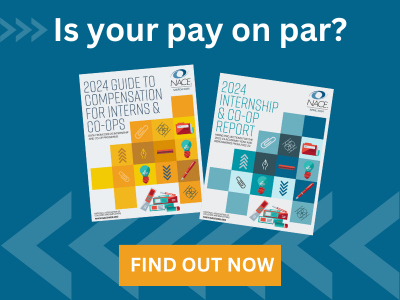Spotlight for Recruiting Professionals
Following the Great Recession a little more than a decade ago, many organizations learned a costly, yet valuable, lesson, according to Trudy Steinfeld.
“Many employers responded to the economic crisis by cutting off their talent pipeline,” explains Steinfeld, strategic adviser, Americas, at Cappfinity.
“They did not have jobs, so they just stopped recruiting. When the economy started to improve, it took them three to five years to recover and build talent for the future and they fell behind. Organizations that respond in this way during the current pandemic—even though there might be pauses or changes to internships or the need to rescind some offers—will have tremendous difficulty recovering, competing, and securing the top talent they need for the future.”
She sees the lessons learned by those that suspended their college recruiting efforts as a call to action that in order to future-proof their pipeline, organizations need to continue engaging talent throughout all downturns and upswings in the economy.
“Maybe an employer doesn’t have internships right now, maybe it had to freeze those for the summer, but there are creative things it can do to engage and support that talent to keep it engaged,” Steinfeld notes.
For example, organizations can offer learning opportunities to teach their recruits about skills and competencies that will be important in the future work environment, not only to the organizations, but to the students looking to add skills to their toolbox.
Organizations should also take this opportunity to reimagine their recruiting channels. For example, she recommends they reconsider the core school strategy of recruiting at the same 10 target schools each year.
“We have technology now, so we can expand that a little bit, but it still is not preparing employers for a future in which they might need not only diverse talent, but talent coming from different backgrounds and locations with a variety of skills and qualities,” Steinfeld says.
“If an organization only concentrates on those 10 schools, it is never going to account for its future needs. Maybe it got the talent it needed there in 2019, but that may not help it for 2021.”
Organizations are going through changes, not only because of the pandemic, but because of the ways that businesses and nonprofits are doing business, Steinfeld says.
“These modes are evolving, and so are the organizations’ needs,” she notes.
“Employers cannot only hire talent for what they need right now because that need is going to change within six months. They need to account for how business is changing rapidly and anticipate their needs for the future.”
This, Steinfeld says, should be a bigger goal than only focusing on prescriptive skills or majors or on one set of criteria to evaluate candidates. This pandemic has underscored the importance of candidates being flexible, resilient, and able to multitask, among other broader skills.
These broader skills can come out in the story students tell about their experience during the coronavirus pandemic. Another skill that is going to be essential is being able to collaborate, not in a traditional setting, but in a digital environment.
“I also think that Black Lives Matter has changed the conversation,” Steinfeld continues.
“It is no longer enough to say you want to be inclusive; companies are going to be looking for talent that has a certain value set that says I am aware and embrace diversity, but that is also able to demonstrate that with real actions. I feel that this journey is going to be about self-reflection on the part of candidates and their values, but also for employers that must truly prioritize and reset some of the competencies and ways they evaluate talent.”
It also puts an onus on organizations to attract candidates in ways they would not have looked at before.
“This is where humanity and equity come in as organizations are evaluating for different competencies,” Steinfeld explains.
“During the pandemic, students might not have adequate WiFi at home or they may be sharing a computer with several family members. How do organizations build in technology that can give students who do not have all the conveniences other students have, the resources to be a part of this?
“Organizations that do not account for these disparities are missing out on this valuable talent for their pipeline. Maybe they need to allow a more self-paced format for completing assignments. Organizations should give students more leeway because, if not, with some of the challenges they are facing, the students will abandon the process.”






